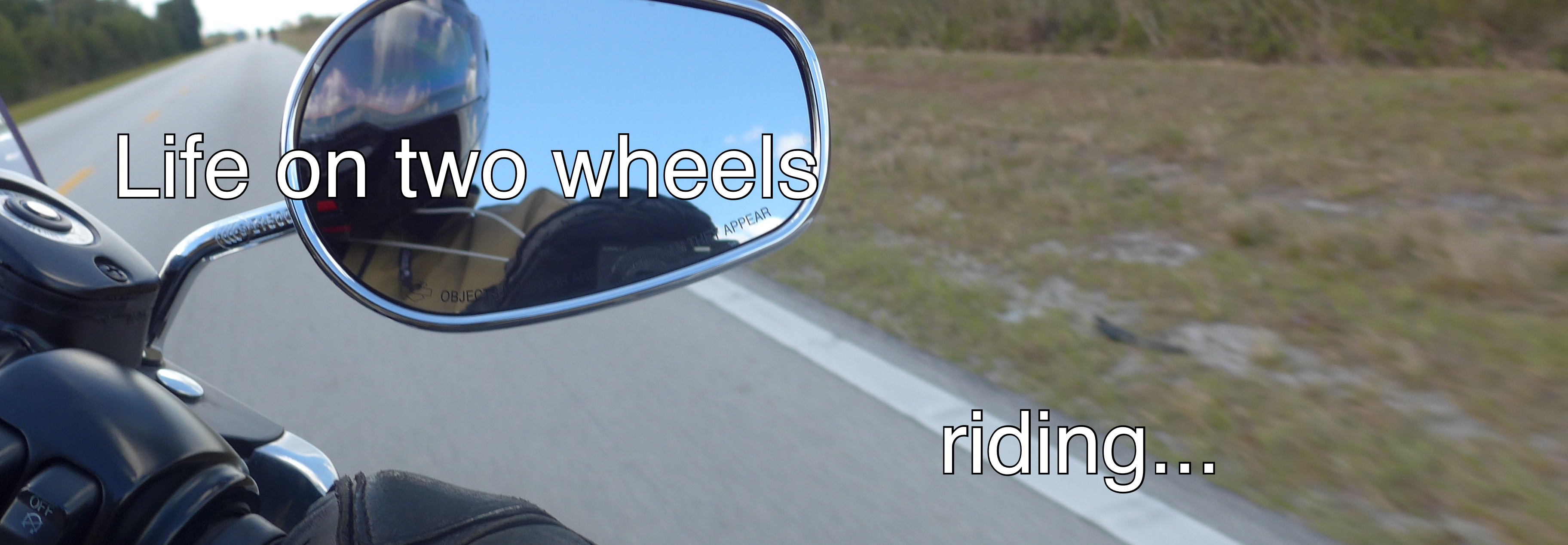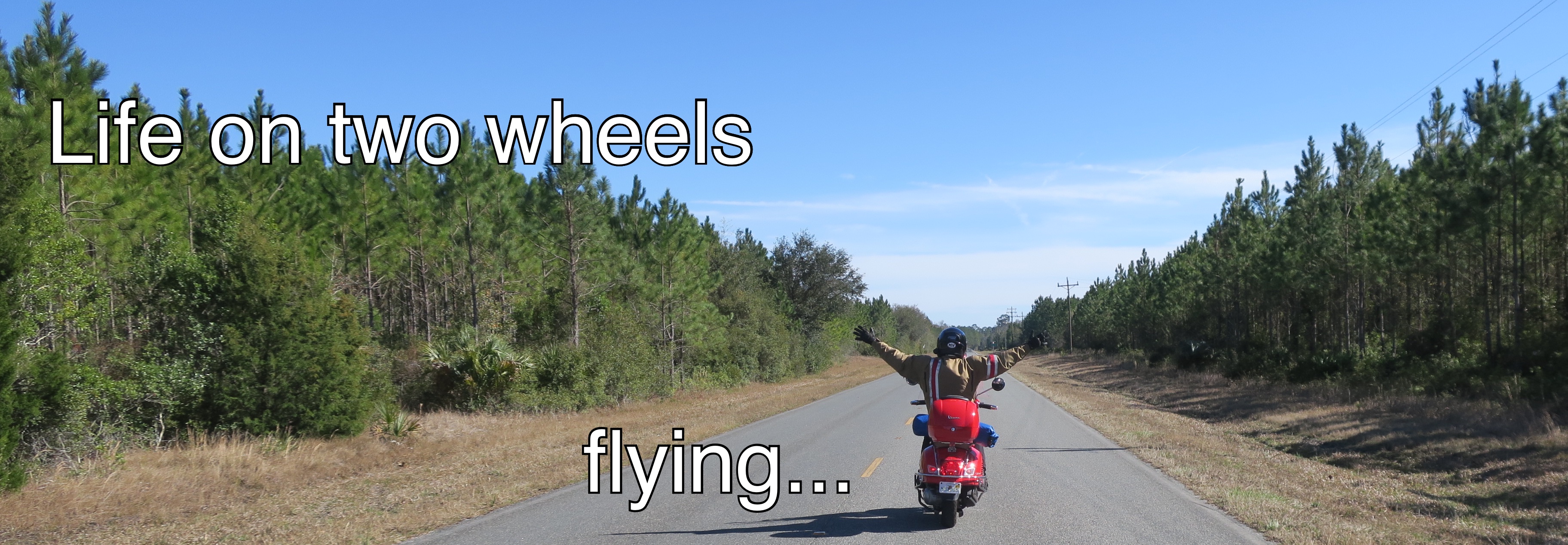Eventually you will want to park your bike somewhere, and not want to schlep your helmet along for your stroll.
If you wear a half helmet or perhaps a three-quarter helmet, and if your pet carrier or top case are relatively empty, you can store your helmet there and it will be out of sight, protected from the elements, and reasonably secure.
If your helmet doesn't fit there, you'll need another strategy. Then again, maybe your helmet would fit there, but, like me, you carry other stuff in those places (rain suit, tool kit, portable air compressor, locks, digital camera, Sham-Wow, RAM mount accessories, monocular spy scope, ear plugs, flattened beer can (indispensable for soft ground to support the stand), air pressure gauge, Iphone charging cable, bungee net, GPS unit, re-usable shopping bags, sunglasses, velcro strap to compress the rear brake when the tire needs air, Icon waterproof gauntlets, and other sundries), and then you won't have room for a helmet, or much other stuff.
Sheesh, I sure do carry a lot of stuff. I'll have to have another listen to George Carlin's inspirational riff on 'stuff'.
You could just lock your helmet to the back wheel, like these brave souls do (I don't know them, I just parked next to them at the mall).
One plus of this strategy is that if a thief takes your scoot, those helmets will smack his leg with each turn of the stolen wheel.
But sitting on the ground like that seems a little inelegant, not to mention that you might get an earful of ants and spiders when you pop your lid back on.
If your helmet strap closes with a double D-ring, like a horse saddle cinch, Vespa's got you covered. It's easy to overlook this tiny feature under the saddle, just at the lip of the pet carrier, on the starboard side, at one'clock.
If you still can't spot it, this picture may well be worth a thousand more words.
Once you close the saddle, the helmet hangs securely from the chin strap.
You might think that the strategies I've covered so far are the only ones you'll need to secure your helmet.
Well, if your helmet is a full-face helmet, and if it has a nice ratchet closure, like mine, then you're still out of luck.
So what do I do?
I'm glad you asked. It took me a while to figure it out.
I picked up a short cable lock at the Montreal Harley Davidson + BMW dealer.
I close the chin-guard on my Nolan N102 helmet, thread the cable lock though the visor opening, pass the cable through the grab rail, and close the lock. I lower the visor, then sit the helmet down on the saddle, up against the topcase.
The nice thing about this strategy is that if it rains while you're off running errands, the inside of the helmet stays nice and dry.
Wait! You say you have an open-face helmet with a ratchet closure? You're still not out of luck. You need to get a T-bar thingy specially made for the Nolan ratchet closure helmet. You thread it through the ratchet, then slip the hole on the T-bar onto the under-seat helmet hook, and close the seat.
There you have it, six sure-fire strategies for securing your helmet, before you set off for a walk in the park.
Showing posts with label RAM mounts. Show all posts
Showing posts with label RAM mounts. Show all posts
Sunday, August 28, 2011
Wednesday, July 14, 2010
Science and scenery
 A process that began in March ended the other day when I received and installed the RAM mount for my Garmin StreetPilot i5 GPS system.
A process that began in March ended the other day when I received and installed the RAM mount for my Garmin StreetPilot i5 GPS system.The RAM mount is from GPScity.com (actually from their Canadian web site, GPScity.ca). The RAM mount is rock solid. I thought I could get away without the special GPS cradle built specifically for my GPS and just use the ball device that mounts in the round socket on the unit, but the fit is a little too loose and when I hit a pothole this morning it was enough to jarr the unit off the mount.
No harm done, the unit is light and dangled safely from the power cord (thank heavens for snug USB-type connectors). I am going to experiment with trying to make the physical connection of the ball socket more snug (I'm thinking a thin rubber sheet in the socket) before I order the cradle from GPScity.
As for the Garmin StreetPilot unit, even at the loudest volume setting, it is very difficult to hear the spoken instructions above 40 km/h. The display is easy to read however and what I was most looking forward to was to be able to see an accurate speed measurement in km/h. My Vespa LX150 is a US model and the markings on the speedometer are most prominently in miles, with the kilometres in much smaller print with a smaller radius, so harder to read and, it seems to me, less accurate.
The power cord for the GPS unit plugs into the 12 volt power outlet I installed in the glove box. There is just enough play in the glove box door that the door can close securely, just slightly compressing the wire.
So after months of wondering, I now know that my Vespa speedometer reads approximately 2 km/h too fast, overall pretty accurate, based on what I have read on the Modern Vespa forum.
So much for the science, now for the scenery.
 People who are not familiar with the shores of the Island of Montreal and the roads that snake along them might find it hard to believe that scenery this appealing is literally to be viewed during the morning commute, and without even getting off the saddle.
People who are not familiar with the shores of the Island of Montreal and the roads that snake along them might find it hard to believe that scenery this appealing is literally to be viewed during the morning commute, and without even getting off the saddle.Here's the proof.
Taken from my perch, sitting on the Vespa, looking right:
 Same vantage point, looking left.
Same vantage point, looking left.
Subscribe to:
Comments (Atom)
The copyright in all text and photographs, except as noted, belongs to David Masse.













